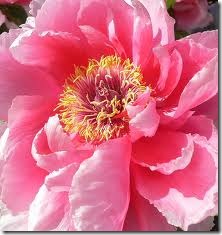-
Both peony and clematis flowers are fragrant, decorative plants with vibrantly colored blooms. The clematis is a deciduous vine with an average lifespan of 25 years. Clematis blooms come in several different colors, including white, pink and maroon, and are usually bell shaped. The peony is a hardy herbaceous perennial that can withstand some harsh conditions. Both plants are fast growing and thrive in warm and temperate climates. Though both are disease resistant, a few problems can become life-threatening if left untreated.
Clematis Wilt
-
A fungal disease that thrives in the soil, clematis wilt can cause a sudden decline and eventual death of clematis. The clematis vine is sometimes fragile, an attribute that makes it a favorite for gardeners, but can also lead to damage and fungi contamination. It is especially important to care for the vine in times of heavy rain and strong wind. Clematis wilt usually attack as the flower buds begin to open, appearing as lesions and fungal growth. Spreading can be contained with fungicide and proper pruning.
Crown Gall
-
Crown gall is found in the soil and can survive for several years before finding a host. The clematis is more susceptible than the peony, though it is fatal to both. The crown gall bacteria infects the plants through wounds, usually naturally occurring through pruning and cultivation. Infected plants will develop large, light-colored galls along the soil line, stems and roots. Effects of the disease include stunted growth, premature defoliation and progressive death of stems, leaves and other parts. Crown gall is not curable, and infected plants should be removed as quickly as possible and the area avoided for planting.
Powdery Mildew
-
A disease that affects several species around the world, Powdery mildew affects both clematis and peony. The disease initially causes damage superficially, causing damage to leaves and flowers. As it progresses, death progresses along stems and leaves and eventually the plant starves from lack of sunlight. The disease is so named because of the powdery white residue it leaves on both sides of infected foliage. The problem is easily treated with fungicide spray that targets the disease. Additionally, affected pieces should be cut away to prevent spreading.


Deprecated: strpos(): Passing null to parameter #1 ($haystack) of type string is deprecated in /home/agriviek8Qv/agriviet.net/public_html/wp-includes/comment-template.php on line 2522